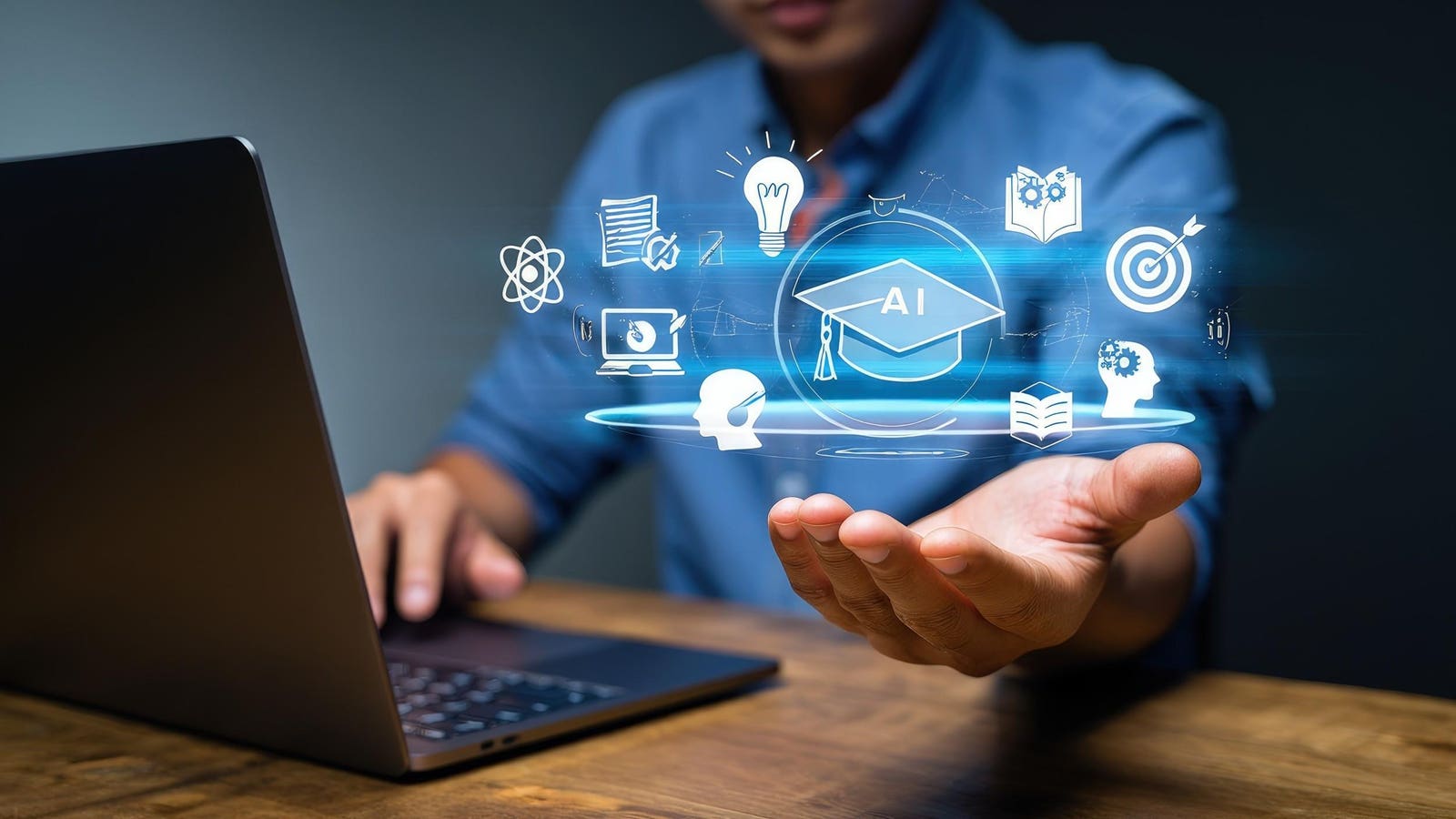Innovation and Technology
How Generative AI Is Becoming a Personal Assistant, Not Just a Productivity Tool

It’s been just over two years since the launch of ChatGPT kickstarted the generative AI revolution. In that short time, we’ve seen it evolve to become a powerful and truly useful business tool. But the ways it’s being used might come as a surprise. When we first saw it, many of us probably assumed that it would mainly be used to carry out creative and technical tasks on our behalf, such as coding and writing content.
Unexpected Uses of Generative AI
However, a recent survey reported in Harvard Business Review suggests this isn’t the case. Rather than doing our work for us, the majority of users are looking to it for support, organization, and even friendship! Topping the list of use cases, according to the report, is therapy and companionship. This suggests that its 24/7 availability and ability to offer anonymous, honest advice and feedback is highly valued. On the other hand, marketing tasks—such as blog writing, creating social media posts or advertising copy—appear far lower down the list of popular uses.
Insights And Implications
One thing that’s clear is that although generative AI is quite capable of doing work for us while we put our feet up and relax, many prefer to use it for generating ideas and brainstorming. This could simply come down to the quality of AI-generated material or even inbuilt bias in humans that deter us from wanting to consume robotic content. It’s often noted that generative AI writing style can come across as very bland and formulaic. When asked, most people still say they would rather read content created by humans. Even if, in practice, we can’t always tell the difference.
As the report’s author, Marc Zao-Sanders states, “the top 10 genAI use cases in 2025 indicate a shift from technical to emotional applications, and in particular, growth in areas such as therapy, personal productivity and personal development.” After therapy and companionship, the most common uses for generative AI were “organizing my life,” “finding purpose,” and “enhancing learning.” The first technical use case, “creating code” ranked fifth on the list, followed by “generating ideas”. This upends some seemingly common-sense assumptions about how society would adopt generative AI, suggesting it will be used in more reflective, introspective ways than was at first predicted.
Therapeutic Uses and Education
In particular, therapeutic uses topping the list may seem surprising. But when we consider that worldwide, there is a shortage of professionals trained to talk us through mental health challenges, it makes more sense. The survey’s findings are supported by the wide range of emerging genAI applications designed for therapeutic use, such as Wysa, Youper and Woebot. A growing need to continuously learn and upskill in the face of technological advancement could also explain the popularity of using AI to enhance our education and professional development.
Future Thoughts
The current trajectory of AI use suggests a future where AI is seen as a collaborative and supportive assistant, rather than a replacement for human qualities and abilities. This has important implications for the way it will be used in business. Adopting it for use cases that support human workers, rather than attempting to replace them, is likely to lead to happier, less stressed and ultimately more productive employees. There is already growing evidence that businesses see investing in AI-based mental health companions and chatbots as a way of mitigating the loss of productivity caused by stress and anxiety.
Conclusion
Overall, these insights indicate that generative AI is being adopted into a broader range of facets of everyday life, rather than simply doing work that we don’t want to do ourselves. As generative AI continues to evolve, we can expect it to become better at these types of tasks. Personalized wellness support, guided learning and education opportunities organizing workflows and brainstorming ideas are all areas where it can provide a huge amount of value to many organizations while removing anxiety that it is here to replace us or make us redundant. Understanding how AI is being used today is essential if we want to influence how it evolves in the future. While it’s easy to imagine a world where robots take over all our tasks, the real opportunity lies in using AI to help us work more intelligently, collaborate more effectively, and support healthier, more balanced ways of working.
FAQs
Q: What is the primary use of generative AI according to recent research?
A: The primary use of generative AI is for therapy, companionship, and life organization, rather than technical tasks like coding or content creation.
Q: Why are people using generative AI for therapeutic purposes?
A: People are using generative AI for therapeutic purposes because of its 24/7 availability and ability to offer anonymous, honest advice and feedback, as well as a shortage of professionals trained to talk us through mental health challenges.
Q: What are the implications of using generative AI in business?
A: The implications of using generative AI in business are that it can lead to happier, less stressed, and ultimately more productive employees, and that it can provide a huge amount of value to many organizations while removing anxiety that it is here to replace us or make us redundant.
Q: What is the future of generative AI?
A: The future of generative AI suggests a future where AI is seen as a collaborative and supportive assistant, rather than a replacement for human qualities and abilities, and where it will be used to help us work more intelligently, collaborate more effectively, and support healthier, more balanced ways of working.
Innovation and Technology
Immigration Service Targets H-1B Visa Holders For Adverse Information

Introduction to Unusual Requests for Evidence
United States immigration officials are issuing Requests for Evidence for H-1B and employment-based immigrant petitions, asking for home addresses and biometrics. Attorneys are worried because U.S. Citizenship and Immigration Services have not made such requests before. These requests are connected to USCIS claims that the agency has “adverse information” on individuals. It remains unclear if Trump administration officials have added employment-based visa applicants to its plans to identify and deport people lawfully in the United States, or if the requests serve another purpose.
Immigration Cases Start Receiving Unusual Requests For Evidence
When filing petitions for H-1B visas and I-140s for employment-based green cards, attorneys have received Requests for Evidence referencing “potentially adverse information.” The requests ask for the beneficiary’s residential address so that USCIS can collect their biometric information. “This is highly unusual because biometrics are not typically required for these case types,” said Vic Goel of Goel & Anderson. “The RFEs also fail to explain the nature of the adverse information, leaving employers and attorneys in the dark. It appears that DHS may be using AI tools to flag individuals based on undisclosed data, possibly from social media or other government databases," Goel said.
Nature of the Requests for Evidence
In one Request for Evidence, a USCIS adjudicator wrote: “We have encountered potentially adverse information related to the beneficiary. To continue processing your application or petition, we required an updated address for the beneficiary so that we may collect biometric data.” It then asks that “the beneficiary’s current and updated residential address” be submitted. “These RFEs are unusual because they don’t follow the process that USCIS historically has applied,” said Kevin Miner of Fragomen. “Information exchange for most employment-based petitions is done in writing. The company files a petition and explains why the foreign national qualifies for the H-1B or other work-authorized status that is being requested. If USCIS has questions after reviewing that filing, the agency issues a Request for Evidence explaining what remains unclear about the eligibility, and the company then responds.”
Concerns Among Immigration Attorneys
Miner points out that these Requests for Evidence differ because they do not ask substantive questions. Instead, the requests only state that “adverse information” about the beneficiary exists and the agency needs biometrics. Attorneys note that biometrics are not a typical part of the H-1B, I-140 or other employment-based petition process. U.S. Citizenship and Immigration Services has not provided any notice about a process change. USCIS did not respond to a request for comment to explain the purpose of the Requests for Evidence.
Immigration Attorneys Weigh The Best Course Of Action
When a government agency introduces new policies without notice, employers, attorneys and affected individuals are left wondering how to proceed. That applies to the current situation. “For now, I recommend not responding directly to the RFE by providing the beneficiary’s address or scheduling biometrics,” said Goel. “This is because this information is already in the record, and more pointedly because it is unclear why USCIS is asking for it. Instead, the attorney or petitioner should respond by citing 8 CFR 103.2(b)(16)(i), which requires USCIS to disclose any derogatory information being used as a basis for an adverse decision.”
Future Implications
Miner agrees with that approach to the Requests for Evidence. “Like responding to any other request for the government, the employer should endeavor to provide USCIS with the information it needs to be able to make an appropriate decision on the employer’s request,” Miner said. “In some instances, this could include asking USCIS as part of the RFE response to provide more information about what sort of adverse information it has identified about the beneficiary so that the employer can try to address those concerns. Because USCIS has only recently begun issuing these requests, we don’t yet know what further steps USCIS will take once the employer responds to the request.” Goel said that, without transparency about the source and substance of the information, “petitioners are unable to meaningfully respond or defend” against potentially erroneous allegations.
Conclusion
The USCIS Requests for Evidence occur while the Trump administration deports international students for minor infractions, protests and op-eds, raising alarm bells for employers and universities concerned about attracting talent to the United States. The last thing employers want is a new policy that makes it more challenging to hire or retain talent. The H-1B visa category is already the most restrictive in the U.S. immigration system, with only 20% of new H-1B applications turned into approved workers under the 85,000 annual limit. Companies and immigration attorneys are in a “wait and see” mode, unsure if these unusual Requests for Evidence foreshadow new restrictive measures.
FAQs
- Q: What is the purpose of the Requests for Evidence issued by USCIS for H-1B and employment-based immigrant petitions?
A: The purpose is unclear, but it involves collecting biometric data due to “potentially adverse information” about the beneficiaries. - Q: Are biometrics typically required for H-1B or employment-based green card petitions?
A: No, biometrics are not typically required for these types of petitions. - Q: How should employers or attorneys respond to these unusual Requests for Evidence?
A: It is recommended not to respond directly by providing the beneficiary’s address or scheduling biometrics. Instead, cite 8 CFR 103.2(b)(16)(i) to request disclosure of any derogatory information. - Q: What are the implications of these Requests for Evidence for international students and the U.S. immigration system?
A: The implications are uncertain but may further restrict the already limited H-1B visa category and make it more challenging for employers to hire or retain international talent.
Innovation and Technology
WDC, Microsoft And Material Recyclers Recover Rare Earths From HDDs

Hard disk drives contain valuable materials that are used in their construction and operation. This includes rare-earth magnetics that are used in the rotary actuator that allows the heads to write and read information from tracks of data on the disk surfaces. The rare earth elements used in HDDs include Neodymium, Praseodymium and Dysprosium, used because of their unique magnetic properties.
Economic Value of Rare Earth Elements
Rare earths have a significant economic value and in light of recent embargos of the types of rare earths that are used in constructing HDDs, recovering the rare earths from end-of-life HDDs will have significant economic value. Besides their use in HDD motors, rare earth elements are used in electric vehicles, wind turbines and advanced electronics.
Creating a Circular Economy for Storage Devices
We have written in the past about creating a circular economy for storage devices. As an example of this effort, Western Digital, Microsoft’s cloud data centers and a couple of materials recycling companies recently reported extracting rare earths from about 47,000 pounds of shredded end-of-life HDDs and other materials. The recycling partners are Critical Materials Recovery and PedalPoint Recycling.
The Recycling Process
The hard drives were collected from several Microsoft data centers in the United States and sent to the recycling partners. Shreds of HDDs, SSDs, and caddies were sent to PedalPoint where they were sorted and processed. The magnets and steel were then sent to CMR to figure out the best way to sort and size the materials and extract the rare earth elements using CMR’s environmentally friendly and economically competitive acid-free recycling process.
Mass Production Ecosystem
The four companies went through multiple pilots to create a mass production ecosystem at scale for retrieval of rare earths, which was completed in December 2024. Together the companies transformed close to 50,000 pounds of end-of-life drives, mounting caddies, and other materials into critical, high-value materials, all while significantly reducing environmental impact.
Rare Earth Recycling Methodology
The figure below from the white paper on this project shows the acid-free dissolution and recovery of rare earth elements using a copper salt solution. This method is said to be ideal for leaching from low-concentrated rare earth feedstocks, such as from shredded HDDs. This method recovers more than 90% of the REEs from the HDD feedstock to produce a more than 99.5% pure rare earth oxides.
Benefits of Domestic Recycling
The WDC release says that more than 85% of rare earth elements primary production occurs outside the US and the domestic recycling rate is low. The largest hyperscalers in the world have collaborated to create an advanced eco-friendly sorting system. The non-acid based recycling process not only recapture rare earths but also gold, copper, aluminum and steel. The current rate earth element recycling in the US is less than 10%. This system recaptured about 80% by mass of the raw recycled feedstock. With domestic recycling of rare earth, access to these materials can minimize transportation emissions and decrease the dependency on imported materials. In addition, using this recycling method, obtaining these materials is estimated to generate about 95% less greenhouse gas emissions compared to traditional mining and processing practices.
Conclusion
WDC, Microsoft and a couple of recycling companies have shown a high efficiency, acid-free process for extracting rare earth elements from shredded hard disk drives. Recycling valuable materials from storage devices can improve the local supply chain and avoid environmental impacts.
FAQs
Q: What are the rare earth elements used in HDDs?
A: The rare earth elements used in HDDs include Neodymium, Praseodymium and Dysprosium.
Q: What is the significance of recovering rare earths from end-of-life HDDs?
A: Recovering rare earths from end-of-life HDDs has significant economic value and can minimize transportation emissions and decrease the dependency on imported materials.
Q: What is the current rate of rare earth element recycling in the US?
A: The current rate of rare earth element recycling in the US is less than 10%.
Q: What are the benefits of using the acid-free recycling process?
A: The acid-free recycling process can recover more than 90% of the REEs from the HDD feedstock and generate about 95% less greenhouse gas emissions compared to traditional mining and processing practices.
Innovation and Technology
Human Rights and Digital Rights

Technology for social change is revolutionizing the way we live, interact, and advocate for human rights. With the rise of digital technologies, the landscape of human rights has expanded to include digital rights, which are essential for promoting and protecting human dignity in the online sphere. In this article, we will explore the intersection of human rights and digital rights, and discuss the ways in which technology can be harnessed to promote social justice and equality.
Understanding Human Rights
Human rights are fundamental rights and freedoms that belong to every human being, regardless of their nationality, ethnicity, gender, or socioeconomic status. These rights are universal, inalienable, and interdependent, and are enshrined in international law through various treaties and conventions. Human rights include the right to life, liberty, and security of person, as well as the right to freedom of expression, assembly, and association.
Historical Development of Human Rights
The concept of human rights has evolved over time, with significant milestones including the adoption of the Universal Declaration of Human Rights (UDHR) in 1948. The UDHR sets out a broad range of civil, political, economic, social, and cultural rights that are essential for human dignity and well-being. Since then, numerous international and regional human rights instruments have been developed to further elaborate and protect human rights.
Key Principles of Human Rights
Human rights are based on several key principles, including universality, indivisibility, interdependence, and inalienability. These principles emphasize that human rights belong to all individuals, and that they are fundamental to human dignity and well-being. Human rights are also non-discriminatory, meaning that they apply equally to all individuals, regardless of their background or circumstances.
Digital Rights: An Emerging Area of Human Rights
Digital rights refer to the human rights that are relevant to the online sphere, including the right to freedom of expression, access to information, and privacy. The rise of digital technologies has created new opportunities for individuals to exercise their human rights, but it has also raised new challenges and concerns. Digital rights are essential for promoting and protecting human dignity in the online sphere, and for ensuring that individuals can exercise their human rights in a safe and secure environment.
The Importance of Digital Rights
Digital rights are essential for promoting and protecting human dignity in the online sphere. The internet and other digital technologies have transformed the way we live, interact, and access information, and have created new opportunities for individuals to exercise their human rights. However, the online sphere also poses new risks and challenges, including online harassment, cyberbullying, and surveillance.
Key Digital Rights
Key digital rights include the right to freedom of expression, access to information, and privacy. These rights are essential for promoting and protecting human dignity in the online sphere, and for ensuring that individuals can exercise their human rights in a safe and secure environment. Other digital rights include the right to online assembly and association, and the right to protection against online harassment and cyberbullying.
The Intersection of Human Rights and Digital Rights
The intersection of human rights and digital rights is complex and multifaceted. Human rights are essential for promoting and protecting human dignity in the online sphere, and digital rights are essential for ensuring that individuals can exercise their human rights in a safe and secure environment. The intersection of human rights and digital rights raises new challenges and concerns, including the need to balance the right to freedom of expression with the need to protect individuals from online harassment and cyberbullying.
Challenges and Concerns
The intersection of human rights and digital rights raises several challenges and concerns, including the need to balance competing human rights and the need to protect individuals from online risks and harms. Other challenges and concerns include the need to promote digital literacy and online safety, and the need to ensure that digital technologies are accessible and inclusive.
Opportunities and Solutions
The intersection of human rights and digital rights also presents several opportunities and solutions, including the use of digital technologies to promote and protect human rights. Digital technologies can be used to promote human rights education and awareness, and to provide individuals with access to information and resources. Other opportunities and solutions include the development of digital tools and platforms that promote online safety and inclusivity.
Conclusion
In conclusion, the intersection of human rights and digital rights is complex and multifaceted. Human rights are essential for promoting and protecting human dignity in the online sphere, and digital rights are essential for ensuring that individuals can exercise their human rights in a safe and secure environment. By understanding the intersection of human rights and digital rights, we can promote and protect human dignity in the online sphere, and ensure that individuals can exercise their human rights in a safe and secure environment.
Frequently Asked Questions (FAQs)
What are human rights?
Human rights are fundamental rights and freedoms that belong to every human being, regardless of their nationality, ethnicity, gender, or socioeconomic status. These rights are universal, inalienable, and interdependent, and are enshrined in international law through various treaties and conventions.
What are digital rights?
Digital rights refer to the human rights that are relevant to the online sphere, including the right to freedom of expression, access to information, and privacy. Digital rights are essential for promoting and protecting human dignity in the online sphere, and for ensuring that individuals can exercise their human rights in a safe and secure environment.
Why are digital rights important?
Digital rights are essential for promoting and protecting human dignity in the online sphere. The internet and other digital technologies have transformed the way we live, interact, and access information, and have created new opportunities for individuals to exercise their human rights. However, the online sphere also poses new risks and challenges, including online harassment, cyberbullying, and surveillance.
How can we promote and protect digital rights?
We can promote and protect digital rights by promoting digital literacy and online safety, and by ensuring that digital technologies are accessible and inclusive. We can also promote and protect digital rights by developing digital tools and platforms that promote online safety and inclusivity, and by advocating for policies and laws that protect digital rights.
What is the relationship between human rights and digital rights?
The relationship between human rights and digital rights is complex and multifaceted. Human rights are essential for promoting and protecting human dignity in the online sphere, and digital rights are essential for ensuring that individuals can exercise their human rights in a safe and secure environment. The intersection of human rights and digital rights raises new challenges and concerns, including the need to balance competing human rights and the need to protect individuals from online risks and harms.
-

 Career Advice4 months ago
Career Advice4 months agoInterview with Dr. Kristy K. Taylor, WORxK Global News Magazine Founder
-

 Diversity and Inclusion (DEIA)4 months ago
Diversity and Inclusion (DEIA)4 months agoSarah Herrlinger Talks AirPods Pro Hearing Aid
-

 Career Advice4 months ago
Career Advice4 months agoNetWork Your Way to Success: Top Tips for Maximizing Your Professional Network
-

 Changemaker Interviews4 months ago
Changemaker Interviews4 months agoUnlocking Human Potential: Kim Groshek’s Journey to Transforming Leadership and Stress Resilience
-

 Diversity and Inclusion (DEIA)4 months ago
Diversity and Inclusion (DEIA)4 months agoThe Power of Belonging: Why Feeling Accepted Matters in the Workplace
-

 Global Trends and Politics4 months ago
Global Trends and Politics4 months agoHealth-care stocks fall after Warren PBM bill, Brian Thompson shooting
-

 Global Trends and Politics4 months ago
Global Trends and Politics4 months agoUnionization Goes Mainstream: How the Changing Workforce is Driving Demand for Collective Bargaining
-

 Training and Development4 months ago
Training and Development4 months agoLevel Up: How Upskilling Can Help You Stay Ahead of the Curve in a Rapidly Changing Industry




















